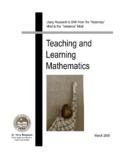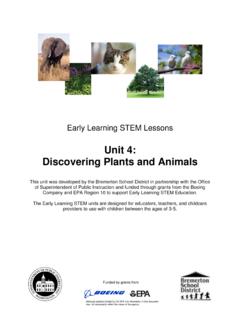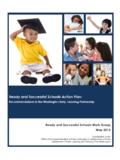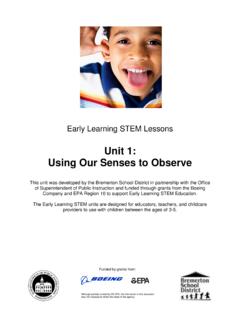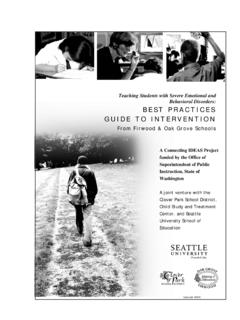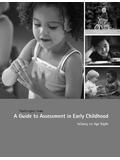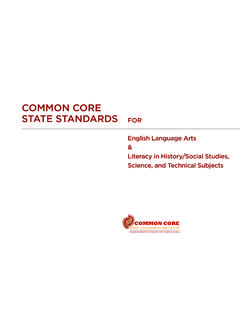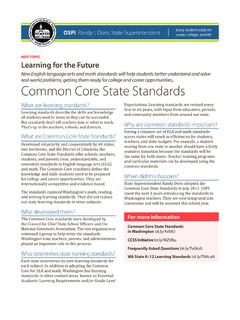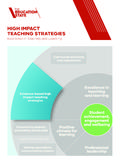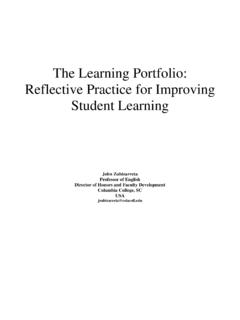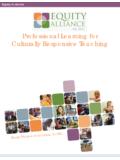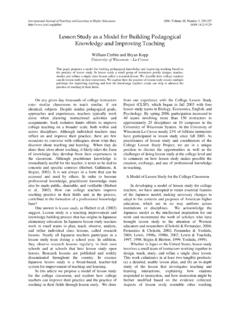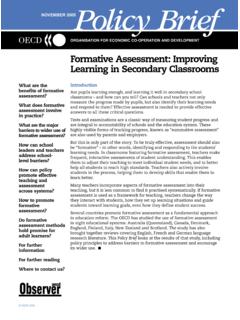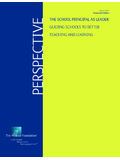Transcription of A Review of Research on the Impact of Professional ...
1 Author's personal copyTeaching and Teacher Education 24 (2008) 80 91A Review of Research on the Impact of Professional learningcommunities on teaching practice and student learning $Vicki Vescio!, Dorene Ross, Alyson AdamsSchool of teaching and learning , University of Florida, 2403 Norman Hall, Box 117048, Gainesville, FL 32611-7048, USAR eceived 7 October 2006; received in revised form 9 January 2007; accepted 10 January 2007 AbstractAfter an overview of the characteristics of Professional learning communities (PLCs), this manuscript presents a reviewof 10 American studies and one English study on the Impact of PLCs on teaching practices and student learning .
2 Although,few studies move beyond self-reports of positive Impact , a small number of empirical studies explore the Impact onteaching practice and student learning . The collective results of these studies suggest that well-developed PLCs havepositive Impact on both teaching practice and student achievement. Implications of this Research and suggestions for nextsteps in the efforts to document the Impact of PLCs on teaching and learning are Elsevier Ltd. All rights : Professional development; School culture; teaching practice; Student achievement; Teacher collaboration1.
3 IntroductionOver the past 20 yr there has been a paradigmshift gathering momentum with regard to theprofessional development of teachers. Fueled bythe complexities of teaching and learning within aclimate of increasing accountability, this reformmoves Professional development beyond merelysupporting the acquisition of new knowledge andskills for teachers. In their article on policies thatsupport Professional development,Darling-Ham-mond and McLaughlin (1995)write, The vision ofpractice that underlies the nation s reform agendarequires most teachers to rethink their own practice,to construct new classroom roles and expectationsabout student outcomes, and to teach in ways theyhave never taught before (para 1).
4 DarlingHammond and McLaughlin go on to note thathelping teachers rethink practice necessitates pro-fessional development that involves teachers in thedual capacities of both teaching and learning andcreates new visions of what, when, and how teachersshould learn. This most recent model of profes-sional development ultimately requires a funda-mental change in the institutional structures thathave governed schooling, as it has model that has evolved as a way of supportingthis paradigm change is that of Professional learningcommunities (PLCs).
5 Although, current professionaldevelopment literature is replete with articles thatARTICLE IN $ - see front matterr2007 Elsevier Ltd. All rights $The preparation of this Review was supported by theLastinger Center for learning at the University of Florida. Anearlier version was presented at the National School ReformResearch Forum, January 2006.!Corresponding author. Tel.: +1 352 3392 0751;fax: +1 352 392 (V. Vescio).Author's personal copyextol the virtues of learning communities as anessential way to organize schools in order tomaximize time spent in Professional development( , Lee, & Holland, 1993;Louis & Marks,1998), only recently has the focus of this literatureshifted to examining empirically the changes inteachers practices and students learning as aresult of PLCs.
6 Although, teachers perceptionsabout the value of PLCs are both valid and valuable,understanding the outcomes of these endeavorson teaching practice and student learning is crucial,particularly in today s era of scarce resourcesand accountability. With this in mind, the purposeof this manuscript is to provide a Review ofthe Research available on the Impact of PLCs onteaching practices and student learning . In anattempt to create a comprehensive picture we firstprovide an overview of the essential characteristics ofPLCs.
7 After developing this foundation, we examinethe current literature as it relates to two basicquestions: In what ways does teaching practice change as aresult of participation in a PLC? And, whataspects of the PLCs support these changes? Does the literature support the assumption thatstudent learning increases when teachers partici-pate in a PLC? And, what aspects of the PLCssupport increased student learning ?We conclude with the implications of this researchand suggestions for next steps in the efforts todocument the Impact of PLCs on teaching Essential characteristics of Professional learningcommunitiesThe concept of a PLC is based on a premise fromthe business sector regarding the capacity oforganizations to learn.
8 Modified to fit the world ofeducation, the concept of a learning organizationbecame that of a learning community that wouldstrive to develop collaborative work cultures forteachers (Thompson, Gregg, & Niska, 2004). learning communities are grounded in two assump-tions. First, it is assumed that knowledge is situatedin the day-to-day lived experiences of teachers andbest understood through critical reflection withothers who share the same experience (Buysse,Sparkman, & Wesley, 2003). Second, it is assumedthat actively engaging teachers in PLCs will increasetheir Professional knowledge and enhance interested in implementing this reformbegan to shift the organization and structure oftheir Professional development efforts toward in-tegrating teacher learning into communities ofpractice with the goal of meeting the educationalneeds of their students through collaborativelyexamining their day-to-day etal.
9 (1996)describe five essential characteristics ofPLCs. First, shared values and norms must bedeveloped with regard to such issues as the group scollective views about children and children sability to learn, school priorities for the use of timeand space, and the proper roles of parents, teachers,and administrators (p. 181). A second essentialcharacteristic is a clear and consistent focus onstudent learning (p. 182).DuFour (2004)reiteratesthis notion when he writes that the mission is notsimply to ensure that students are taught but toensure that they learn.
10 This simple shift from afocus on teaching to a focus on learning hasprofound implications (para 5). The third char-acteristic is reflective dialogue that leads to ex-tensive and continuing conversations amongteachers about curriculum, instruction, and studentdevelopment (Newmann et al., 1996, p. 182).Deprivatizing practice to make teaching publicand focusing on collaboration are the last twocharacteristics of a PLC (Newmann et al., 1996).Although expressed slightly differently, these fivecharacteristics (along with three additional char-acteristics) were confirmed as critical to PLCs in alarge-scale, multi-site study of Professional learningin England (Bolam, McMahon, Stoll, Thomas, &Wallace, 2005).
